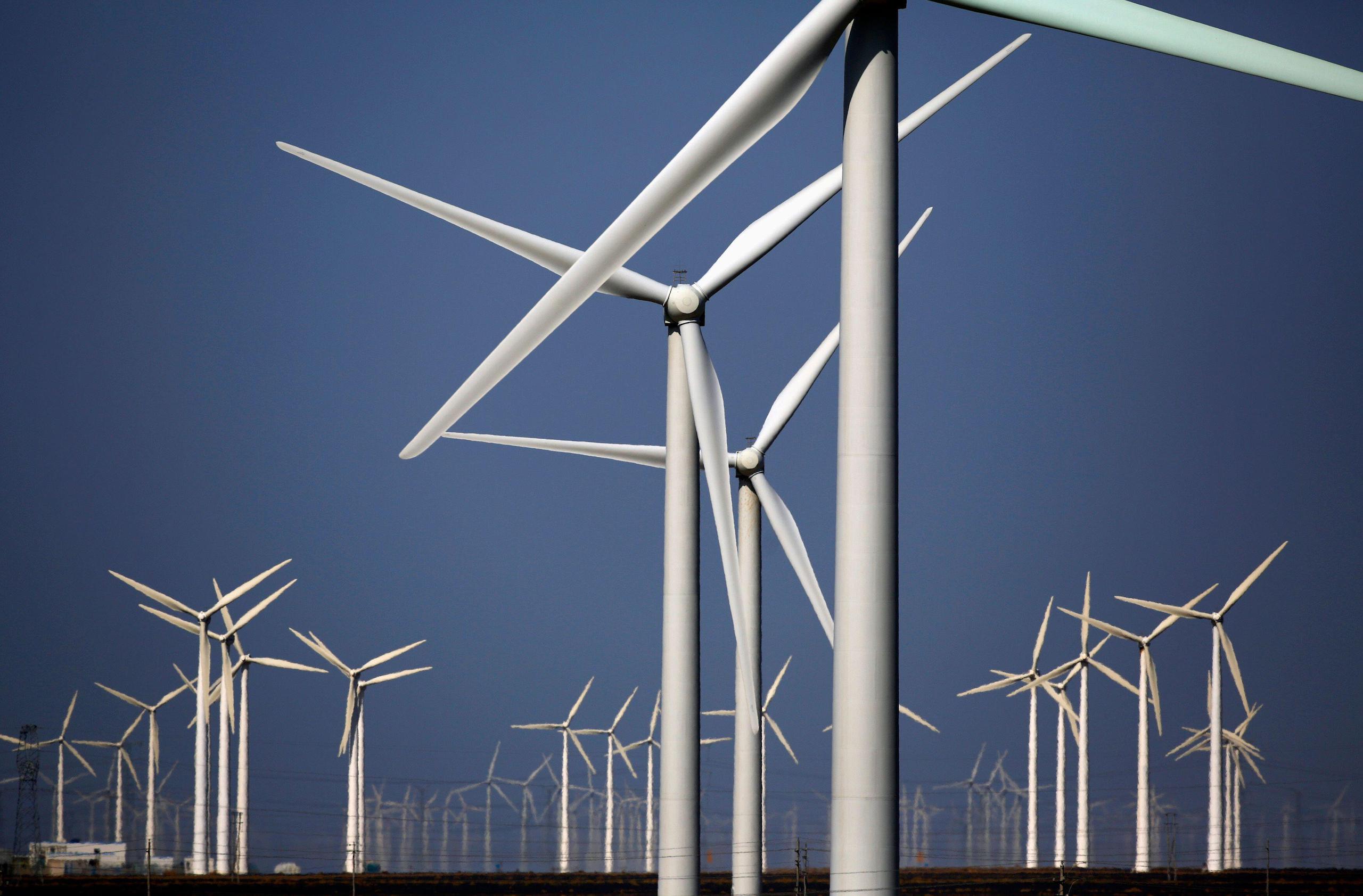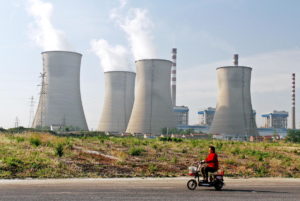The global climate challenge has seen courts around the world use climate legislation or policies as legal grounds in cases or to bring about climate change mitigation or adaptation. Scholars in comparative law have started to look at the different ways countries’ courts deal with climate policy. They have found that some, such as China’s, focus on ensuring that government policy is implemented. In contrast, others are being used to challenge government policies to pursue more ambitious actions. Those differences reflect national justice systems, legal cultures and even models of climate governance.
Regardless of how the relationship between justice and policy develops, climate change lawsuits show that courts no longer merely settle disputes; they actively tackle climate policy issues. China’s courts are no exception. However, China’s particular focus on justice that’s oriented towards implementing policy could be improved: the courts must overcome problems caused by the lack of a framework law on climate change, and they must also improve their ability to apply non-legally binding climate policies in their judicial reasoning.
A judicial system focused on implementing climate policy
China’s judicial authorities implement climate policy in many civil cases rather than use high-profile cases to bring about changes in policy.
Chinese courts deal with large numbers of cases that are conducive to climate change mitigation and adaptation, even though they don’t deal with climate change directly. Most are contract disputes, unlike in other countries where infringements or environmental impact assessments dominate.
For example, a property dispute in Shandong focused on whether energy efficiency data found in an appendix to a contract represented a contractual obligation. The developer maintained that it was only a technical standard. But the court found the developer was required under government policy to include the data in the contract, which was, therefore, part of their obligations. The court ordered the developer to install solar-powered water heaters at no cost to the owners.
The courts are more concerned with implementing national policy than simply resolving specific disputes
China’s courts are also tackling climate change issues in other types of cases. In an air pollution case in Huzhou in 2020, a local procuratorate in the county of Deqing brought a public interest lawsuit after the case had been dealt with in the criminal courts. The Deqing court referred to the Environmental Protection Law, the Tort Liability Law and the Prevention and Control of Atmospheric Pollution Law and decided that the defendant should pay damages for the environmental harms it had caused. The judge’s findings also referred to the Montreal Protocol on Substances that Deplete the Ozone Layer.
In 2018, Friends of Nature brought a case against Gansu Power for failing to connect wind and solar farms to the grid. The environmental organisation complained that the company did not observe the Renewable Energy Law, resulting in a failure to reduce greenhouse gas emissions and environmental harm.

Looking at climate change lawsuits in China shows that the courts are more concerned with implementing national policy than simply resolving specific disputes. Courts use government documents to understand policy aims, and legislation, including contract, tort and environmental laws, as the basis of rulings. They also use non-binding administrative measures in findings of fact and interpretation of contracts. By doing so, they align judgements with the need to mitigate and adapt to climate change.
The use of the justice system to further climate change policy is not limited to individual cases. It’s also become judicial policy. In guidance published in 2021 on handling environmental cases, the Supreme People’s Court included a separate section on “promoting the energy revolution and the socioeconomic green low-carbon transition”. The court’s policy of promoting China’s dual carbon targets – peaking carbon emissions before 2030 and reaching net zero before 2060 – encourages courts at all levels to handle climate change cases. A feature of such cases is that they do not have their own category within China’s judicial taxonomy. Climate change relates to all aspects of life and work, so it must be considered in criminal, administrative, civil and commercial cases. Therefore, using the power of the courts to promote the response to climate change will mean climate consideration entering all kinds of cases. But how judges translate the requirements for climate governance in various types of cases is still unclear and will require research.
Justice geared towards changing climate policy
While in China the focus is on implementing policy, in the EU, the US and some developing nations, courts have been forcing governments to implement existing climate change policies that are perceived to be failing or to set new tougher policies. To do this, they are using a range of legislative sources, including non-binding norms.
There has been a wave of new climate change case types in the past decade. As the defendant in such cases, it is often claimed that the government has a duty to take more effective climate action. A classic example is the 2019 Urgenda case in Holland. This was the first case globally that saw a state held to account for its emissions reduction commitments. The Urgenda Foundation argued that the government’s weak climate policy represented a failure to fulfil its duty of care under the Dutch Civil Code and hence was a breach of the European Convention on Human Rights (ECHR). The Dutch Supreme Court found the government breached the convention due to its failure to meet its own climate targets. It ruled that the government had to reduce national carbon emissions to 75% or less of 1990 levels by 2020.
Prompted by the Urgenda case, courts in other European countries have since set explicit climate goals for their own governments. For example, in Neubauer et al. versus Germany in March 2021, the court found the Federal Climate Change Act partially in breach of the German constitution. It also found that the responsibility for climate protection should be spread proportionally across generations rather than leaving subsequent generations with a “drastic reduction burden”. The court required legislators to toughen up 2030 climate targets by the end of 2022.
In policy-making justice, judges use innovative interpretations of terms and legal techniques to change how the law works. This can be seen in several cases. In the US, Massachusetts versus the Environmental Protection Agency, the Supreme Court ruled that greenhouse gases are “air pollutants”. In Holland’s Urgenda case, the court ruled that the duty of care described in the Dutch Civil Code creates a duty to respond to climate change. In France’s so-called “case of the century” in 2021, the Administrative Court ruled that the term “ecological damage” in the country’s Civil Code includes that arising from climate change. In the Paola Andrea Acosta Alvarado & Daniel Rivas-Ramírez case in Columbia, the constitutional court granted “personhood” to the Amazon basin.
Judges have drawn on a wide range of sources – human rights law, constitutions, civil law and international soft law – in deciding whether environmental policies are legitimate
A feature of these attention-grabbing cases is that judges have drawn on a wide range of sources in deciding whether environmental policies are legitimate. They draw on human rights law, constitutions, civil law and international soft law instruments. In the French case, the court relied on rules on ecological compensation mechanisms found in the country’s Civil Code. It also referred to international law: the goals of the United Nations Framework Convention on Climate Change and the principle of common but differentiated responsibilities found in the Paris Agreement. Finally, the court looked to domestic law, including the Charter for the Environment, which forms a part of the French constitution, and energy and environmental laws, to show the country had already committed to producing a low-carbon development strategy to end ecological harm – and so had a duty to do so.
Challenges facing China’s climate jurisprudence
How Chinese courts handle climate change lawsuits is closely related to the country’s overall approach to climate change. China’s climate governance relies on a developmentalist approach, meaning climate issues are handled at the macroeconomic and industrial levels. Authority to set and implement climate policy is delegated to the government bodies in charge of industrial affairs, allowing them to use macroeconomic measures to change the industrial structure and energy mix to achieve climate goals.
This approach is reflected in the legal framework for climate change in China. To date, rules apply at the sectoral level and are scattered across laws on energy-saving, the circular economy, renewable energy, electricity, clean manufacturing and air pollution. Those laws set up frameworks within which mitigation measures can be taken and, to a large extent, determine the scope of China’s climate change policies. While existing laws contain rules that can be used in climate governance, they are not written solely for that purpose. A comprehensive climate change law is needed. Until then, courts must use climate change provisions scattered across various sectoral laws.
China’s approach means that climate policy will continue to arrive in the form of plans, roadmaps and action plans: macro-control policies that are not legally binding. Although administrative bodies and People’s Congresses at all levels have the authority to set climate change rules, there are few binding local laws or administrative regulations in place: only Shanxi and Ningxia have them.
The existing approach to climate governance looks set. China’s judiciary will continue to use policy-implementing justice with a widening scope, clearer targets and more diverse methods. Given the developmentalist approach to climate governance, the judiciary must decide how to apply macroeconomic plans to individual cases. In current practice, climate policy can be used as supplementary material in interpreting contract terms and legal concepts or to explain the considerations over climate change by the judge in reaching their decisions, thus helping to mainstream climate awareness. Meanwhile, when pursuing public interest environmental lawsuits, procurators often use non-binding policy to show that government bodies have not fulfilled their legal duties. Policies can also provide guidance in rulings, with government bodies referring to plans and roadmaps to explain why their actions are legitimate.
Alongside the two technical challenges – making use of rules scattered across various pieces of legislation and applying climate policy in civil cases – there are other deeper-lying issues. These include ensuring public participation in climate policy decisions and ensuring that the cost of climate measures is fairly distributed. Overall, scholars and society should be asking: how can we create mature judicial mechanisms within a developmentalist model of climate governance?









